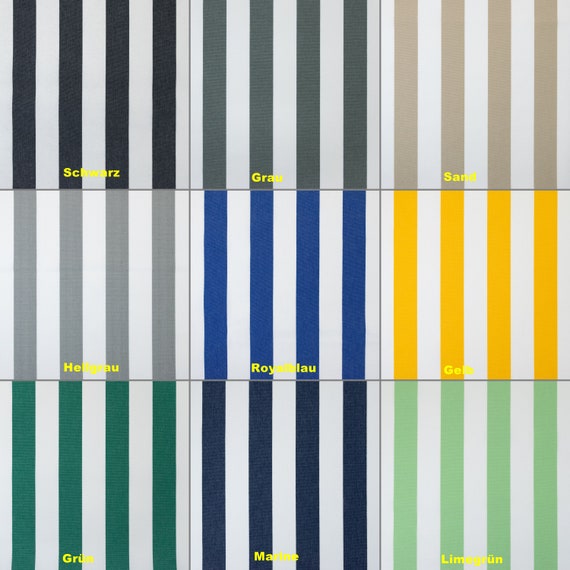Markisenstoff Meterware: Practical Uses and Key Insights
Understanding Markisenstoff Meterware
When it comes to outdoor furnishings and coverings, **markisenstoff meterware** stands out as a versatile and durable choice. This type of fabric is specifically designed for applications requiring weather resistance, making it suitable for awnings, outdoor furniture, and various DIY projects. Markisenstoff is often treated to be waterproof, UV-resistant, and easy to maintain, giving it an edge in diverse environments. This makes it a preferred option for homeowners looking to enhance their outdoor spaces while providing reliable protection from the elements.
Properties of Markisenstoff Meterware
The uniqueness of **markisenstoff** lies in its array of properties tailored for outdoor use. Typically crafted from materials like polyester or a blend with PVC coating, this fabric boasts impressive **durability** against fading, ripping, and environmental stress. For instance, markisenstoff is extensively utilized in creating **sunshades** and **awning fabrics**, primarily due to its ability to repel water and resist mold growth. With options available in various thicknesses, it is essential to choose the right type based on the intended application, such as awning covers versus lighter shades for seating.

Practical Applications of Markisenstoff Meterware
Markisenstoff meterware can be adapted to a myriad of applications. Some popular uses include **protective coverings for outdoor furniture**, **awnings**, and even **sun shelters** for gardening. DIY enthusiasts leverage this robust fabric to create tailored solutions that fit their specific needs, whether for privacy, protection from the sun, or rain shielding. Projects can range from crafting durable **tents** to building custom **umbrellas**, demonstrating this fabric’s adaptability.
Choosing the Right Markisenstoff Meterware
When selecting **markisenstoff meterware**, factors like compatibility with climate, application style, and desired aesthetics come into play. For instance, fabrics with a thick PVC coating offer enhanced durability, making them ideal for higher-exposure areas prone to weather extremes. Conversely, lighter options may be preferable for areas with lower sun exposure and a reduced risk of wear. It’s crucial to consider the **color stability** and **fade resistance** as this will impact the longevity and visual appeal of your projects.
Color and Design Considerations
Color choice not only impacts style but also functionality when selecting **markisenstoff**. Darker colors tend to absorb heat, potentially increasing temperature beneath the fabric. However, they might be more effective in **UV protection**. On the other hand, lighter colors reflect sunlight and can help in keeping shaded areas cooler. Furthermore, you can customize these fabrics with different patterns and prints, helping your outdoor setup complement existing decor.
Maintenance Tips for Markisenstoff Meterware
To extend the lifespan of your **markisenstoff** fabric, regular maintenance is essential. Here are a few practical tips to preserve its integrity: clean the fabric regularly using mild soap and water, avoiding harsh chemicals that could damage the protective coatings. Additionally, proper storage during off-seasons helps prevent degradation from prolonged exposure to elements. When not in use, consider placing it in a dry environment away from direct sunlight to reduce the chance of fading.

Conclusion
Markisenstoff meterware is an ideal solution for anyone looking to invest in durable and long-lasting outdoor coverings. With its versatile applications, protective properties, and maintenance simplicity, it’s no wonder it has gained popularity among DIY enthusiasts and outdoor decorators alike. As interest in outdoor living spaces continues to rise, understanding the benefits and proper usage of markisenstoff is imperative for anyone considering upgrades to their home or garden.
FAQ
1. What types of projects can I create with markisenstoff meterware?
You can create a wide variety of projects using **markisenstoff meterware**, including awnings, sunshades, outdoor furniture covers, tents, and even garden decor. The fabric’s moisture resistance and durability make it suitable for any project requiring protection from the elements.
2. How do I clean markisenstoff fabric?
Cleaning **markisenstoff** is straightforward. Use mild soap mixed with warm water to gently scrub the fabric. Avoid bleach or harsh chemicals as they may degrade the textures and coatings. Rinse thoroughly and allow it to dry completely before storage or reuse.
3. Is markisenstoff resistant to fading?
Yes, quality **markisenstoff** fabrics are designed to be UV-resistant, minimizing fading over time. However, factors such as climate and exposure duration can affect its longevity. Using darker shades can help maintain color over extended periods.
4. What are the main differences between lightweight and heavyweight markisenstoff?
Lightweight **markisenstoff** is typically easier to handle and sew, making it ideal for projects that require flexibility, such as sunshades. Heavyweight options, however, offer enhanced durability and weather resistance, suitable for larger installations like commercial awnings.
5. Can I use markisenstoff in high-wind areas?
Yes, although it is crucial to ensure the fabric is reinforced and properly tensioned to withstand strong winds. Consider using heavier markisenstoff in high-wind locations, as it is more resilient against elements than lighter alternatives.
